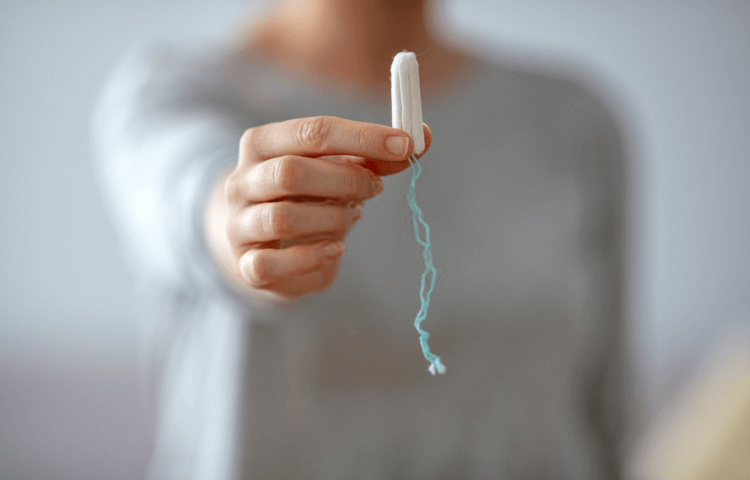Women’s Wellness Part 1: The Prevalence of PMS
PMS is characterised by a collection of physical and emotional symptoms that occur in the day before menstruation.
(Awanish Kumar Pandey, et al. 2013) indicated that 100% of girls tested showed a prevalence of at least one symptom of PMS, with 42.5% showing more than five symptoms.
Some of the most common psychological symptoms ranged from:
- Lethargy (83%)
- Anger and hypersomnia (74%)
- Anxiety (68.5%)
- Feeling overwhelmed (62.5%)
- Hopelessness (50%)
- Difficulty in concentrating (33.5%)
- Tearfulness (26.5%)
- Insomnia (26%)
Some of the most common physical symptoms ranged from:
- Joint or muscle pain (77.5%)
- Headaches (67%)
- Weight gain (58%)
- Backache (57.5%)
- Bloating (41%)
- Breast tenderness (31%)
- Acne (*16.5%)
*16.5% may seem low when compared with some of the other figures mentioned above, however, this still equates to 1/6 women suffering from acne every single month around their menstruation.
The conventional approach for addressing PMS uses SSRI’s, which numbs the individual along with increasing the likelihood of suicide ideation, risks post-SSRI-sexual-dysfunction and depletes melatonin.
This complex condition likely has multiple causes, with fluctuations in hormone levels and nutritional deficiencies playing key roles.
OESTROGEN
One of the possible reasons for PMS has been associated with the excess of oestrogen relative to progesterone.
High oestrogen has also been found to increase thyroid-binding-globulin, which will reduce the activity of the thyroid hormones, further leading to apathy and a lack of energy. Ensuring oestrogen’s efficient metabolism through the correct pathways and supporting elimination from the body is paramount.
In short, this requires a range of nutrients from cruciferous vegetables, flaxseed and possibly grapefruit (grapefruit does have the ability to inhibit CYP3A4 enzyme which will decrease the metabolism of medication. Therefore grapefruit should be avoided to prevent medical complications).
PROGESTERONE
Progesterone is also at its lowest during the time of PMS. Progesterone acts on GABA receptors in the brain to produces a calming effect along with supporting thyroid conversion, thus assisting with energy.
The consumption of Wild Yams supports progesterone.
MAGNESIUM
Magnesium deficiencies may be causing or aggravating symptoms of PMS. Magnesium is essential for nerve, muscle function and the ability for the muscles to relax, all of which can be affected in PMS. (Iran J Nurs Midwifery Res. 2010 Dec).
A decrease of 12.42% in serum magnesium levels have been found in the follicular phase when compared to the menstruation with magnesium levels elevating a further 7% in the luteal phase. These fluctuations portray the role of magnesium in accordance with menstruation.
Magnesium can be obtained through the consumption of dark chocolate or almonds.
IRON
In a meta-analysis, eating an iron-rich diet was linked to a 31% lower risk of developing premenstrual syndrome (Am J Epidemiol. 2013 May). Iron will be depleted during menses, thus further depleting levels. Iron is essential for energy regulation, along with being an essential a cofactor for the enzyme tryptophan hydroxylase, which catalyses the conversion of tryptophan into 5-hydroxytryptophan, a precursor for serotonin (the neurotransmitter associated with mood and happiness).
Iron obtained from plants is likely to have reduced bioavailability within the body. It is often accompanied by phytic acid and oxolates, both of which bind with the iron to prevent absorption.
Another factor to take into account when seeking to optimise iron levels within the body is stomach acid (HCl). HCl is essential to break iron down from food for assimilation within the body.
One can complete the baking soda challenge test for indication of whether their HCl is low or not, by drinking 250ml of water mixed with 1/4tsp of baking soda first thing in the morning. If the individual belches after the 3-minute mark, this would correlate to low HCl and therefore a likelihood that the individual will have poor digestion and assimilation of iron within their body.
ZINC
Women have a 24%–29% lower risk of PMS when in the top 2 quintiles of zinc to copper ratios (Am J Clin Nutr. 1995). Zinc deficiency is associated with depression while copper up-regulates the CYP19A1 enzyme, which leads to aromatisation of androgens to oestrogen (estradiol) while enhancing estradiol binding affinity to the oestrogen receptors, which amplifies its action.
Below are my preferred dietary sources of zinc per 100g:
- Oysters – 61mg
- Beef – 11mg
- Hemp Seeds – 10mg
Zinc is another micronutrient which requires HCl for its assimilation, therefore assessing HCl status could also correlate with the potential zinc status within the individual.
VITAMIN B6
The effectiveness of Vitamin B6 in the treatment of PMS dates back over 40 years. Results were noted such as ‘significant decreases in all symptoms’ (Goei and Abraham, 1983), ’70% reporting good or partial response’ (Brush, 1988) and an ‘improvement in 63% of patients on pyridoxine’ (Day, 1979). The dose used within these studies ranged from 40-200mg (with possible risk of toxicity at 200mg).
Only one patient of the 940 participating in these trials indicated the presence of any side effects that could be attributed to the neuropathy associated with pyridoxine toxicity (London RS, et al. 1991).
Obtaining this level of Vitamin B6 effectively through food will be extremely difficult as these dosages are 29-115 times that of the recommended daily allowance.
Below are my preferred dietary sources of Vitamin B6 per 100g:
- Organic liver – 0.6mg
- Pistachios – 1.7mg
- Salmon – 0.9mg
Above is just an example of how proper nutrition can support and mitigate against PMS.
